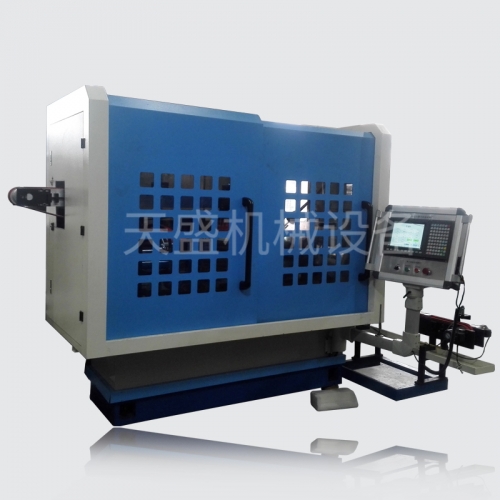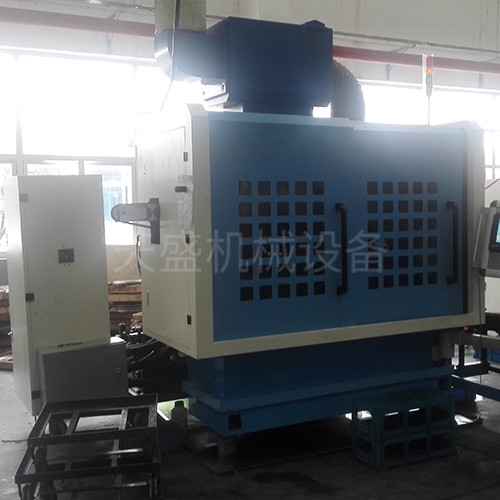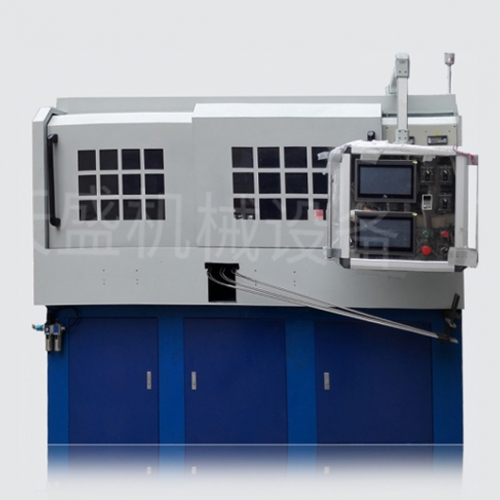What adjusts the clearance of the valve lathe?
When the engine is in a cold state, when the valve lathe is closed, the clearance between the valve lathe and the transmission member is called the valve lathe clearance.
The clearance is too large: the intake and exhaust valve lathes are turned on later, shortening the intake and exhaust time, reducing the opening height of the valve lathe, changing the normal valve timing, so that the engine is not clean due to insufficient intake air. The lowering also increases the impact of the parts of the valve train and accelerates the wear. After the engine is too small, the parts are heated and expanded, and the valve lathe is pushed open, so that the valve lathe is not closed tightly, causing air leakage, power drop, and the sealing surface of the valve lathe is seriously carbonized or burned, even the valve lathe hits the piston. . The valve train using the hydraulic tappet does not require a valve bed clearance.
Everyone needs to know that the gap between the valve lathe rocker and the valve lathe (ie, the valve lathe clearance) exists because the intake and exhaust lathes are installed at the top of the combustion chamber, which is also the highest temperature. In order to leave room for expansion, Therefore, there must be a gap. As for the clearance of the valve lathe, the size of the valve lathe is inconsistent due to the different design of the manufacturer. Usually, the clearance of the intake lathe is between 0.2 and 0.25 mm, and the clearance of the exhaust valve lathe is higher than that of the intake lathe. Large, so the gap is larger, generally between 0.29~0.35. After a long period of movement and wear between the engine valve lathe rocker and the valve lathe, the clearance will become larger and larger, so the adjustment of the valve foot clearance can be achieved. However, not all cars need to adjust the clearance of the valve lathe, and some vehicle valve lathe clearance is automatically adjusted by the oil pressure, there is no need to adjust the valve lathe clearance.
(1) Remove the valve cover of the valve.
Remove the fixing screws of the valve cover of the valve and carefully remove the valve cover of the valve, taking care not to damage the gasket of the valve bed cover. Wipe the oil on the valve lathe and the rocker shaft with a rag to facilitate the adjustment of the valve lathe.
(2) Find a cylinder compression top dead center.
Use the rocker to turn the crankshaft or tilt the flywheel so that one cylinder is at the compression top dead center position. From the front of the engine, the timing pits of the crankshaft pulley are aligned with the timing marks. In some large vehicles, the inspection hole 1-6 cylinder engraving line of the flywheel housing is aligned with the flywheel housing timing mark. For example: Dongfeng EQ6100-1 engine, flywheel 1-6 cylinder engraving should be aligned with the steel ball of the flywheel shell. At this point, it is seen from the valve lathe: the valve lathe of one cylinder should be in the closed state. If the valve lathe of one cylinder is not fully closed, indicating that the cylinder piston is at the bottom dead center position, you should turn the crankshaft 360 degrees again to make the cylinder at the compression top dead center position.

(3) A method of determining that each cylinder is at the compression top dead center.
According to the engine construction principle, we know that when each cylinder is at the compression top dead center, the valve lathe of the cylinder is closed. Therefore, you can open the distributor cover and determine the position of the high-voltage split line of each cylinder, and turn the crankshaft. When the split-fire head points to the high-voltage line position of the cylinder, the instantaneous position of the contact opening, the cylinder is at the end of the compression stroke. Point location. This allows you to more accurately determine the position of the compression top dead center of each cylinder, and easily adjust the valve lathe.
(4) Measure the valve lathe clearance.
The valve lathe clearance is divided into the cold value and the hot value. You should carry out the measurement in accordance with the regulations of the vehicle. Valve lathe clearance
Select the plug gauge that meets the specifications and insert it between the valve lathe lever and the valve lathe rocker arm (or cam). Pull the plug slightly, if there is slight resistance, the gap is correct. In order to determine whether the gap is within the specified range, it is generally measured by the range limit value (for example, the gap range value is between 0.29mm and 0.35mm), first insert the valve lathe clearance with a 0.29mm feeler gauge. At this time, the plug gauge should be Can pass, it is normal; then use the 0.35mm feeler gauge to insert the valve lathe clearance, the plug gauge should not be inserted, so that the gap can be within the given gap. If the 0.29mm plug gauge cannot be inserted into the gap, the gap is too small; if the 0.35mm plug gauge can pass through the gap, the gap is too large. If any of the above does not meet the requirements, indicating that the valve lathe gap is not normal, the clearance must be adjusted.
(5) Adjusting the valve lathe clearance
1) Adjustment of valve lathe clearance. First loosen the fixing nut of the valve lathe adjusting screw, insert the plug gauge of the specified thickness into the gap of the valve lathe, and pull the plug gauge with the same hand to turn the adjusting screw until the plug gauge is slightly resisted. After adjustment, the plug gauge is inserted into the center of the valve lathe gap, the adjustment screw remains stationary, and the fixing nut lock adjustment screw is tightened. After locking the screws, re-measure the valve lathe clearance with the plug gauge, as you may unintentionally turn the adjustment screw during locking to change the valve lathe clearance. If the valve lathe gap changes, it should be re-adjusted to the correct one.
2) Two adjustment methods. According to the construction principle of the valve train, we know that there are certain rules for the arrangement of the intake and exhaust valves. According to the ignition sequence and the order of the intake and exhaust valve lathes, you can check the clearance of the adjustment 4 (four-cylinder machine) or the six-valve lathe (six-cylinder machine); then turn the crankshaft for one week so that the four or six cylinders are at the compression top dead center. Position and adjust the remaining 4 or 5 or 6 valve lathes.
3) Cylinder adjustment method. Since the order of the engine valve lathes is not the same, it is difficult to memorize the order of the intake and exhaust valve lathes. The valve lathe clearance can also be adjusted cylinder by cylinder according to the ignition sequence of the engine or the fuel injection sequence. In order to accurately adjust the valve lathe clearance, you can use the method described above to use the distributor's direction of the burner head to adjust the inlet and exhaust valve lathe clearance of the cylinder.
The address of this article:http://zhongzhizao.com/en/news/410.html
Key word:氣門設備,氣門磨床,氣門車床
Recently browse:
Related products:
Related news:
- Tell me more about how the valve lathe controls the operation.
- The steps and methods of valve machine fault handling are nothing more than
- So how should the principle and function of the valve device be understood?
- Safety precautions for using valve lathes
- What are the advantages of an automatic valve lathe as a guide feed thrust?
- Learn about the independent entry and exit of the valve lathe system
- How to make the industry of valve lathe processing rise
- Main features of welding of rod end drilling machine for valve equipment
- Tiansheng Xiaobian explains to you the classification of engine variable valve equipment intake
- Talk about the special equipment for the valve starting and starting the valve








